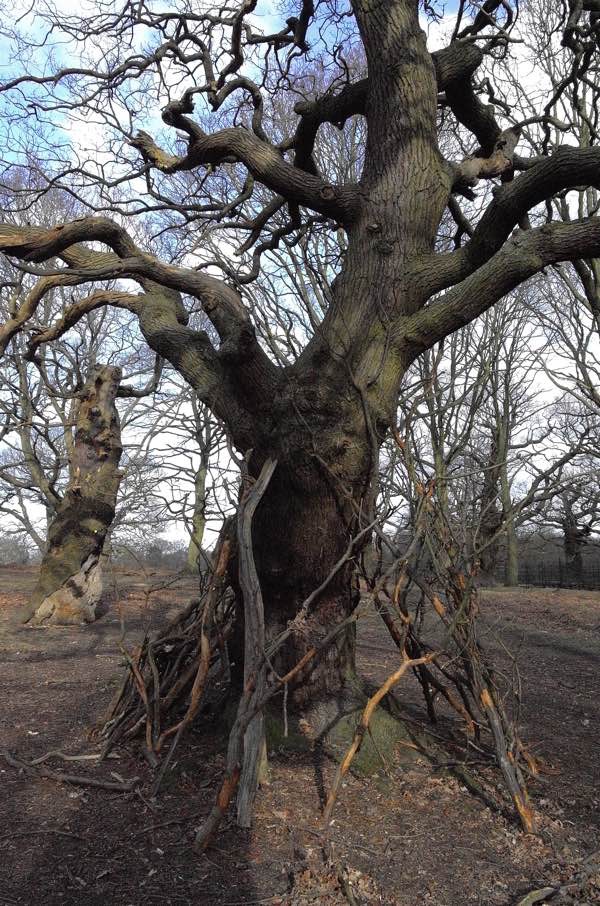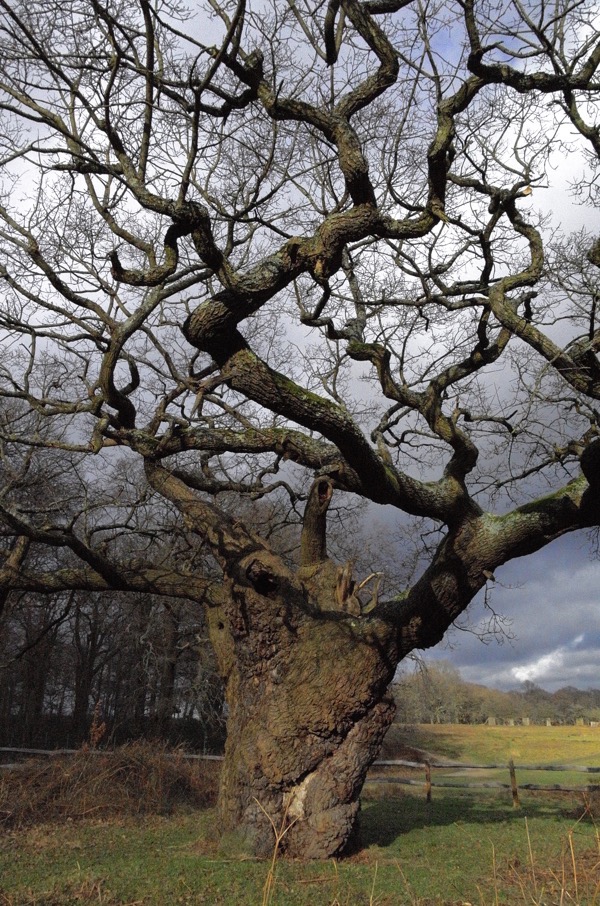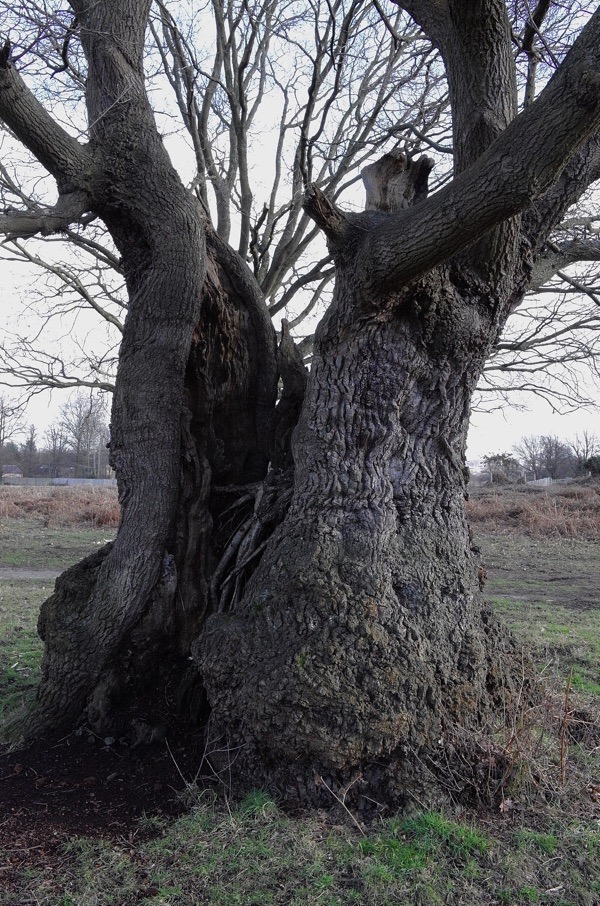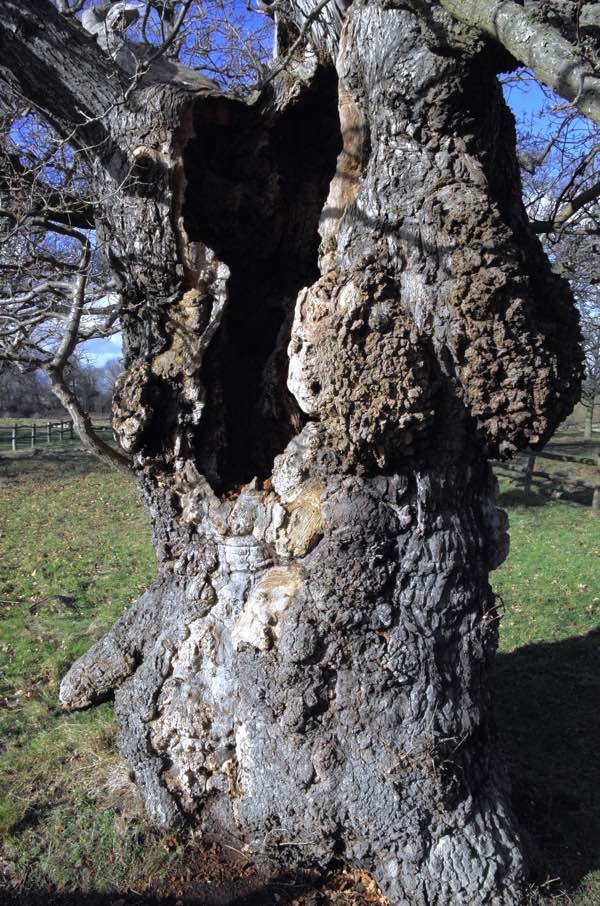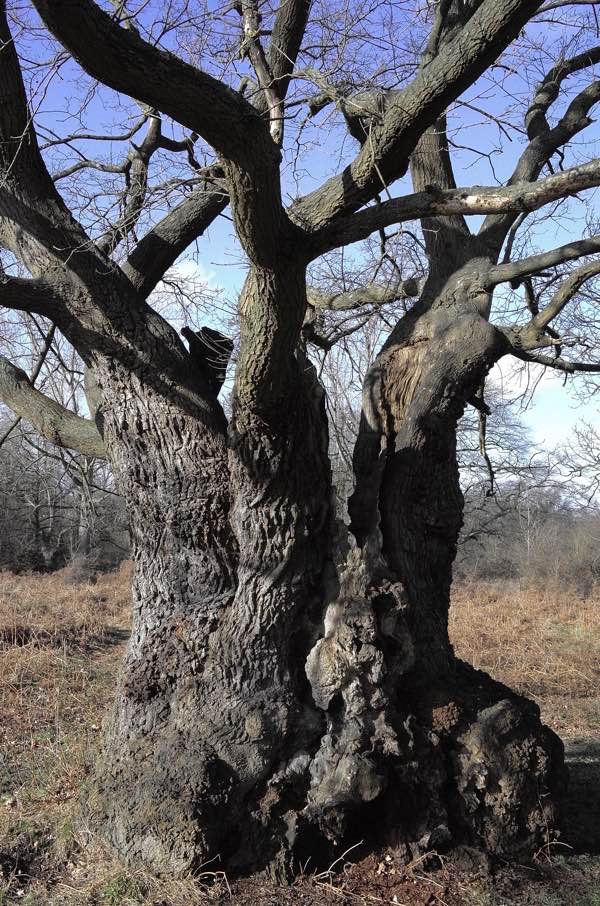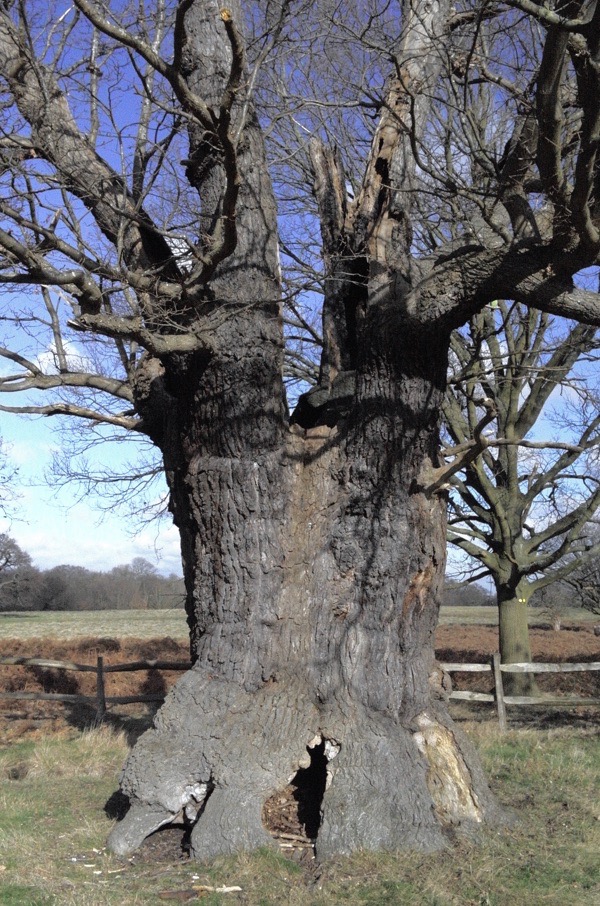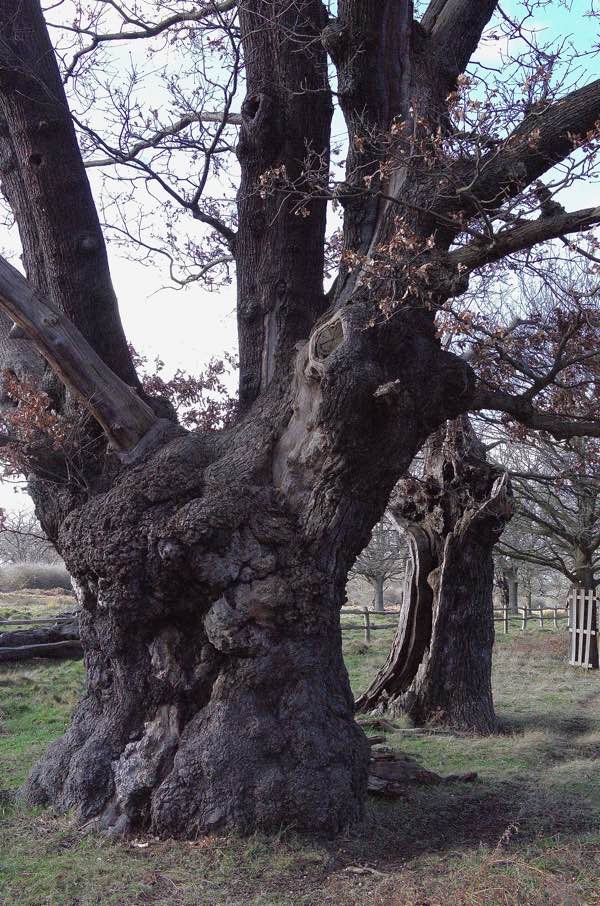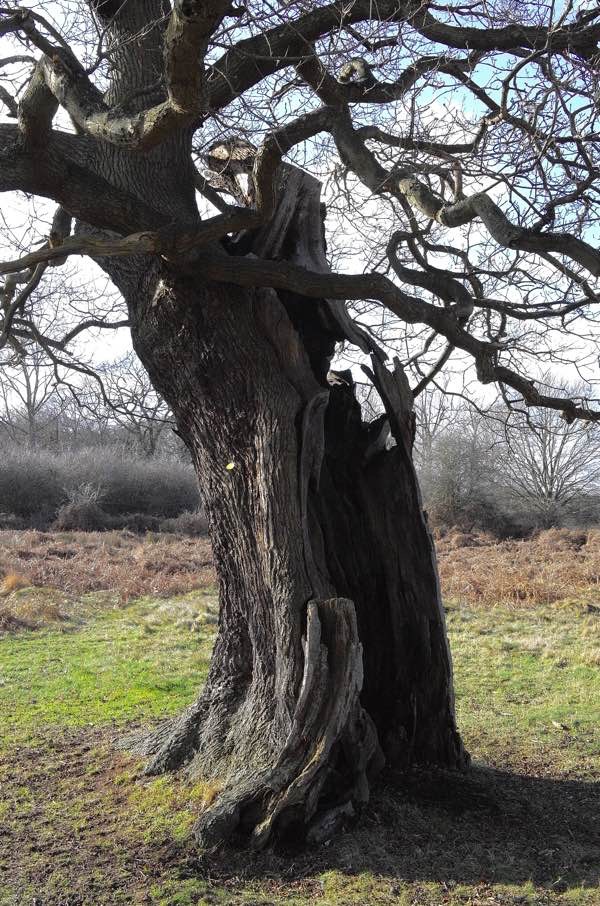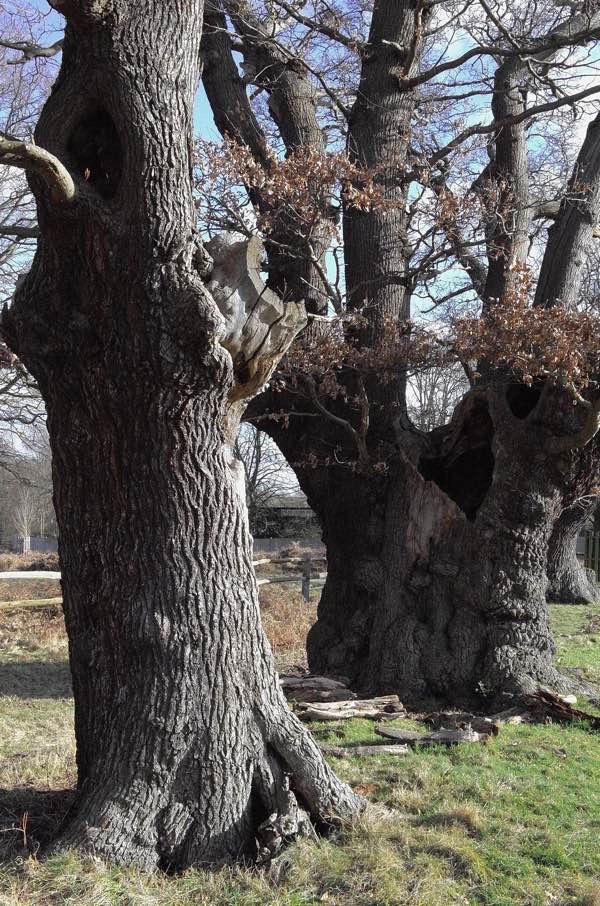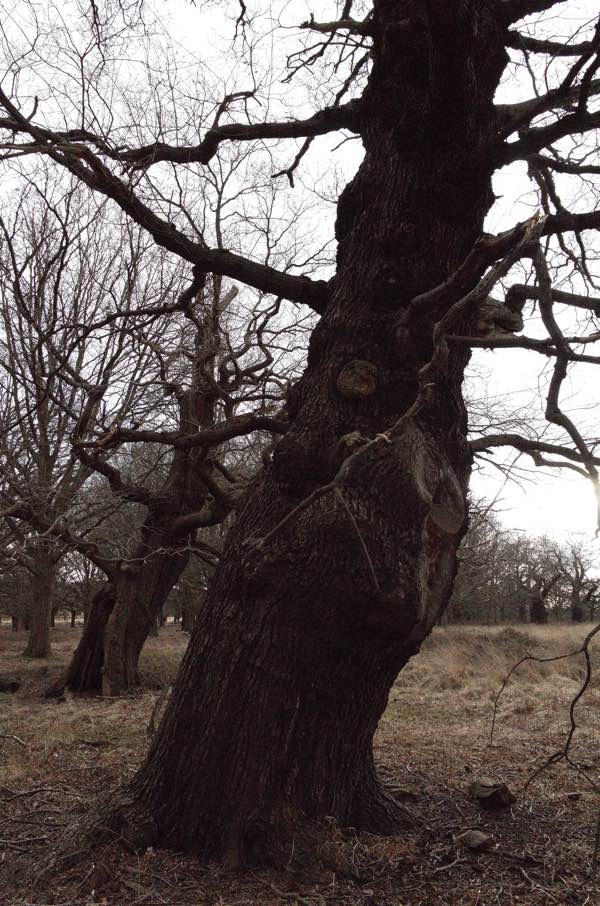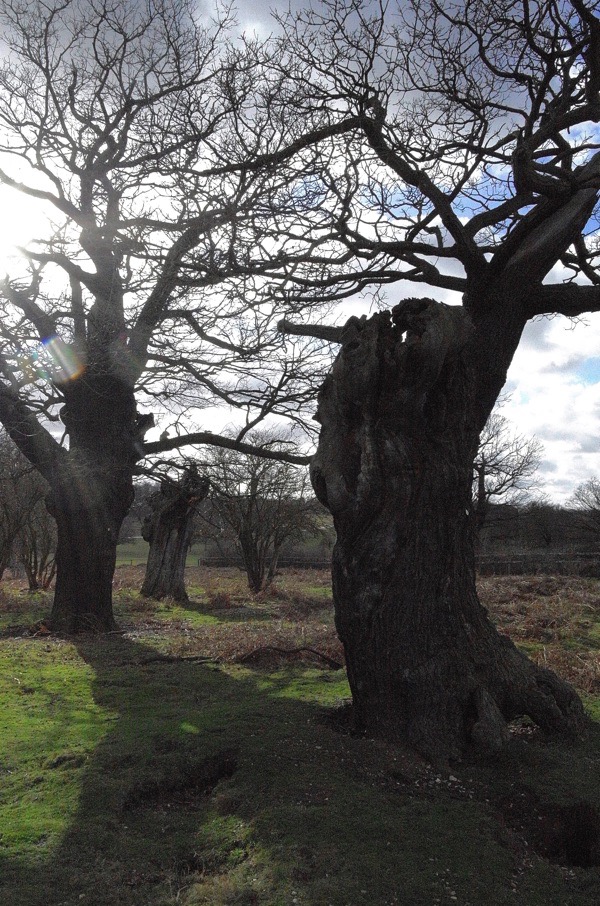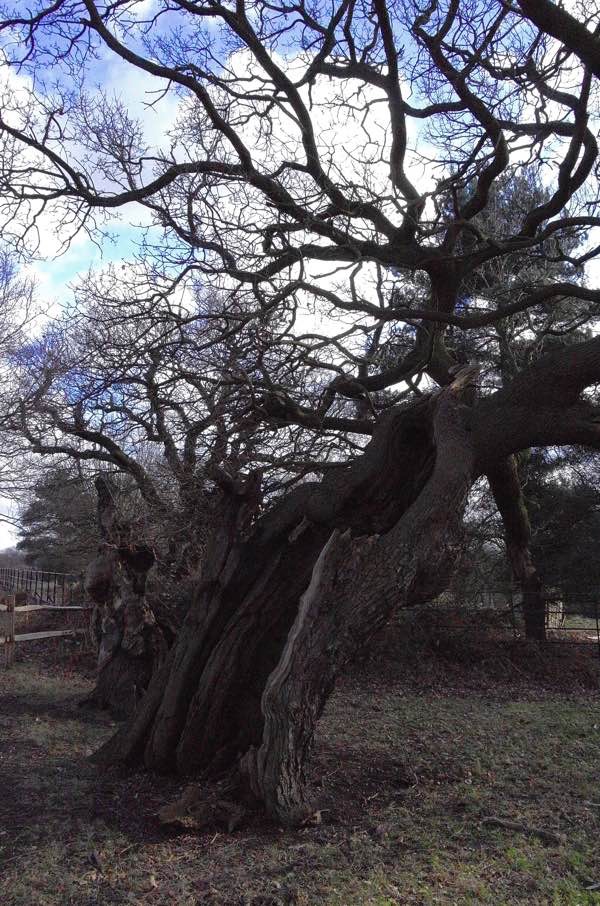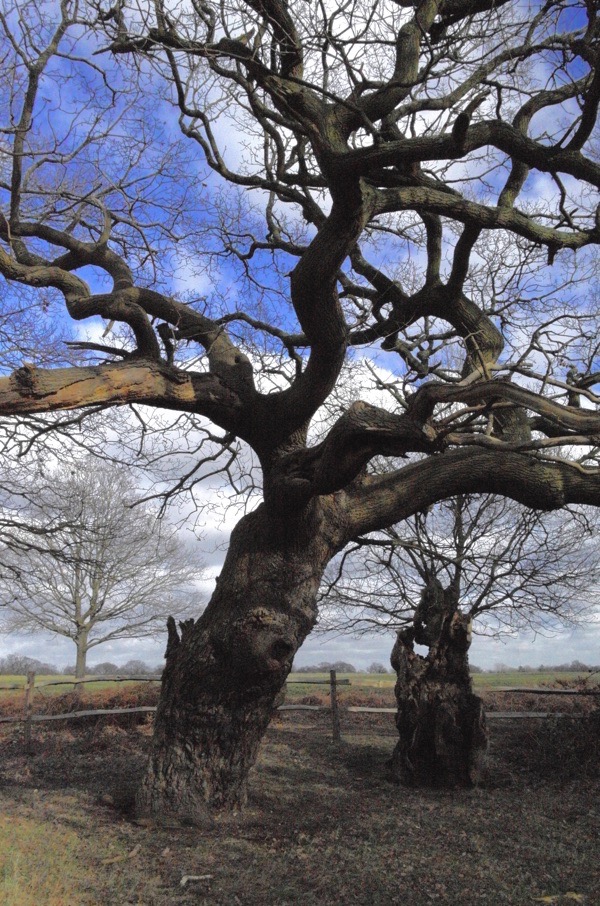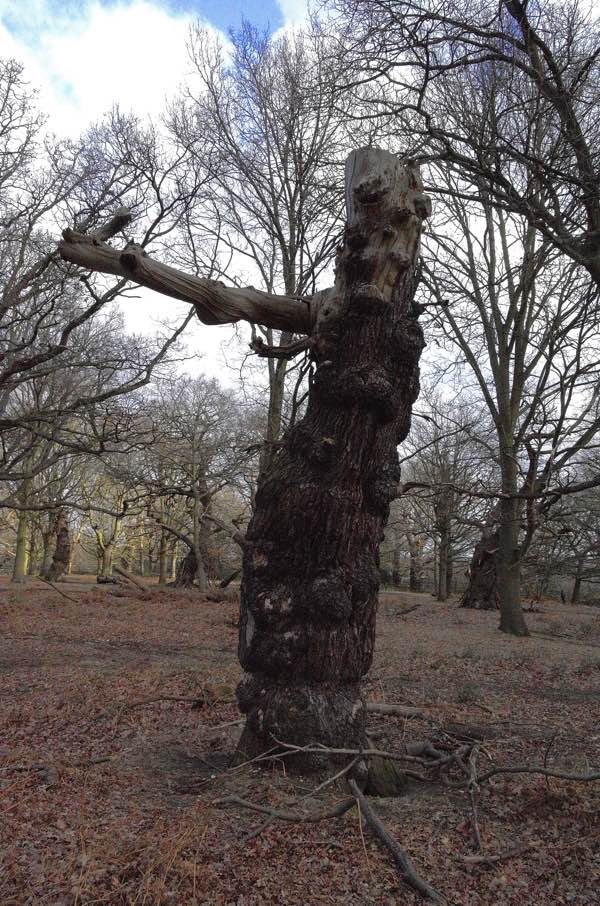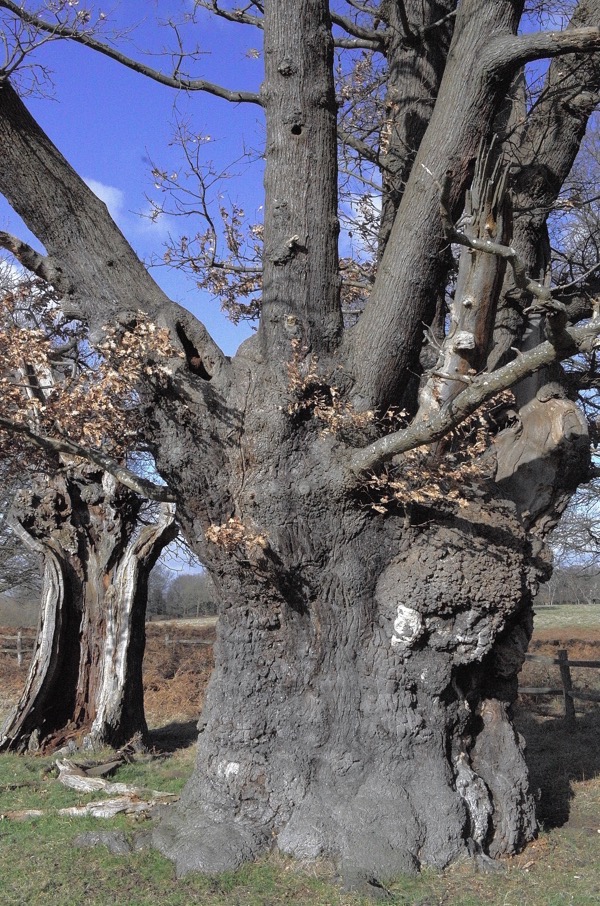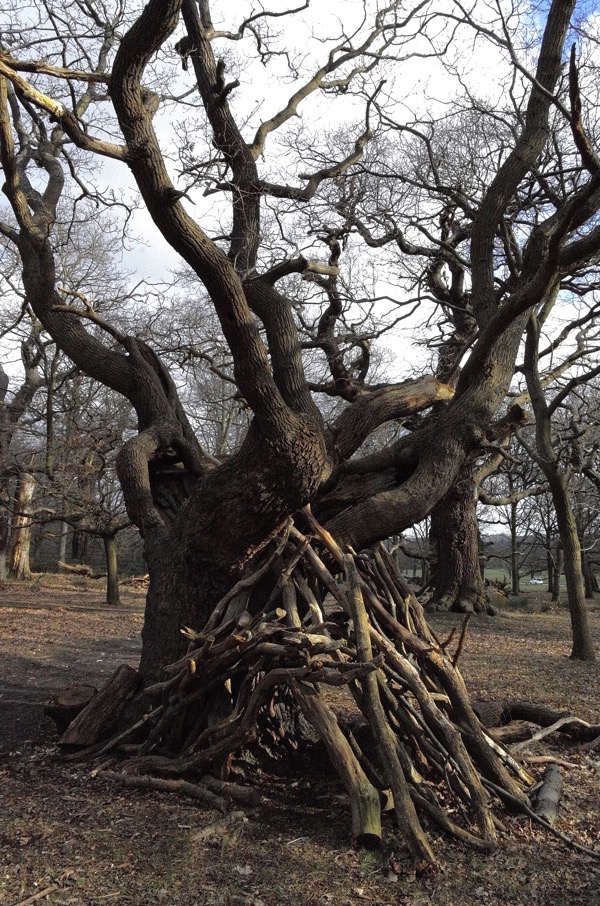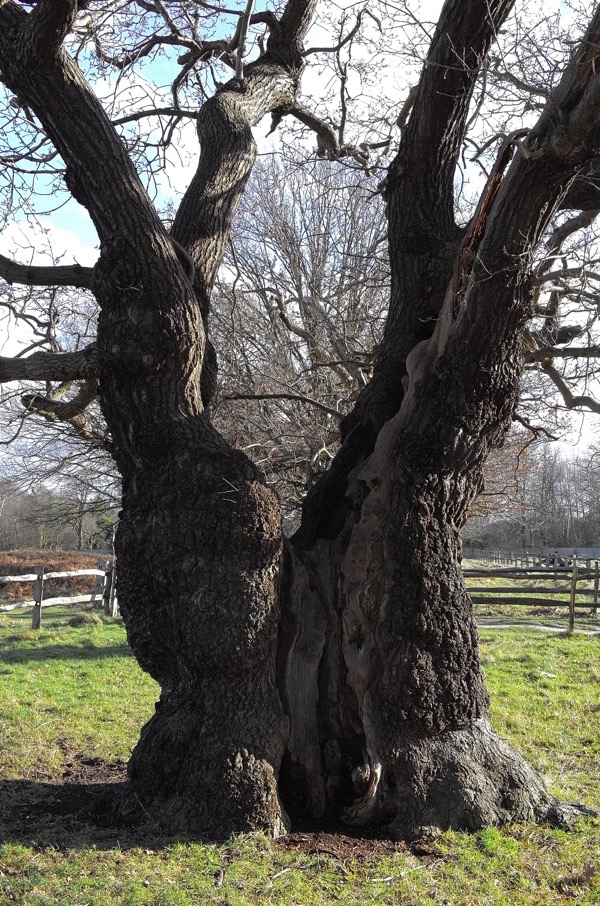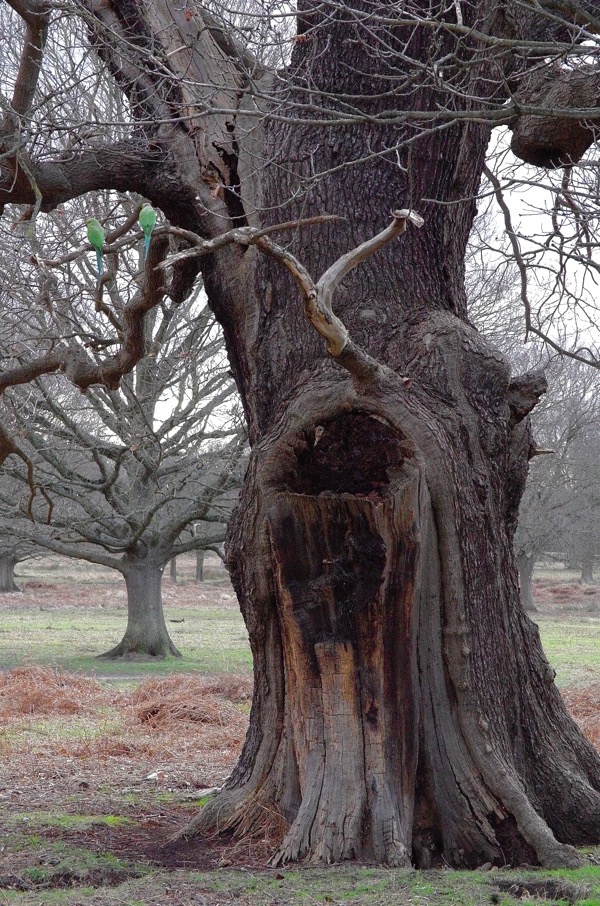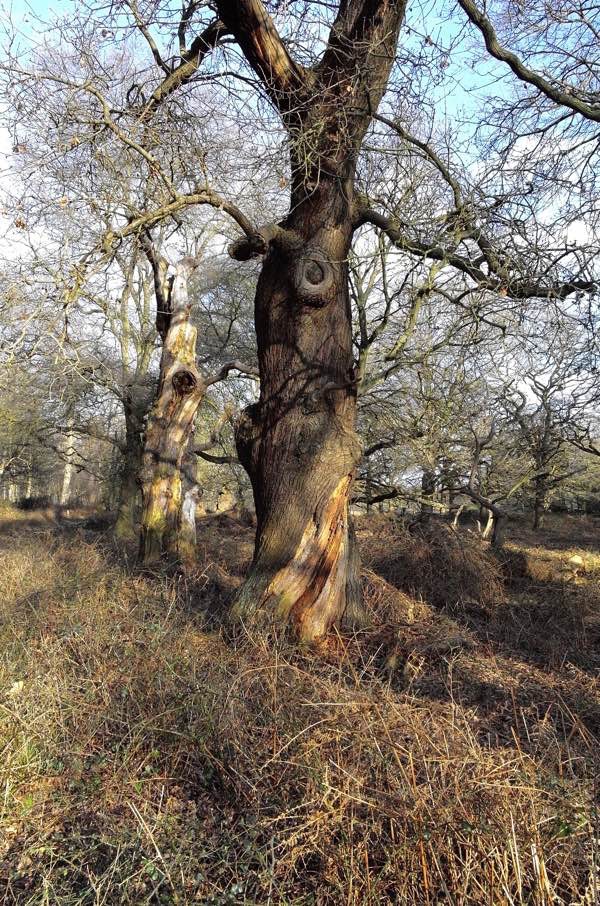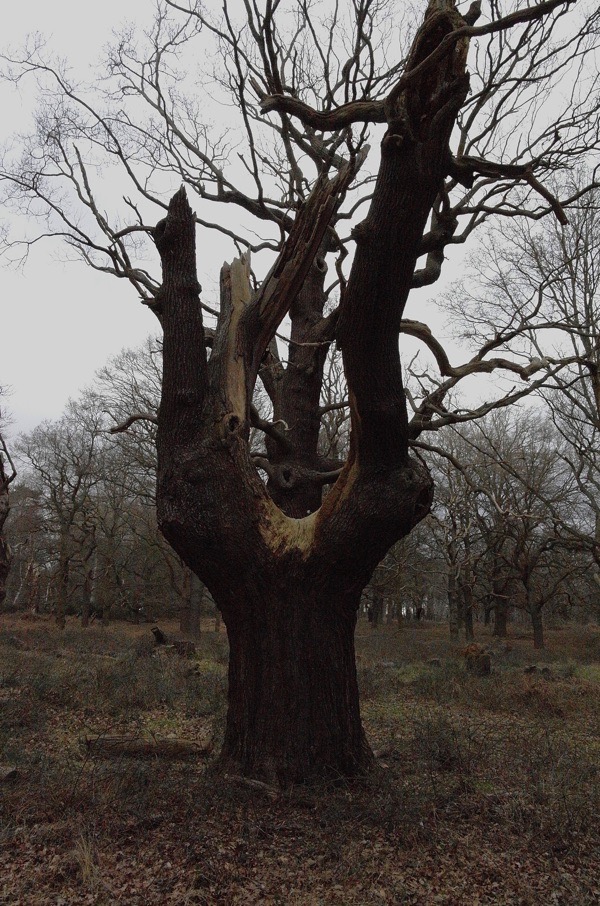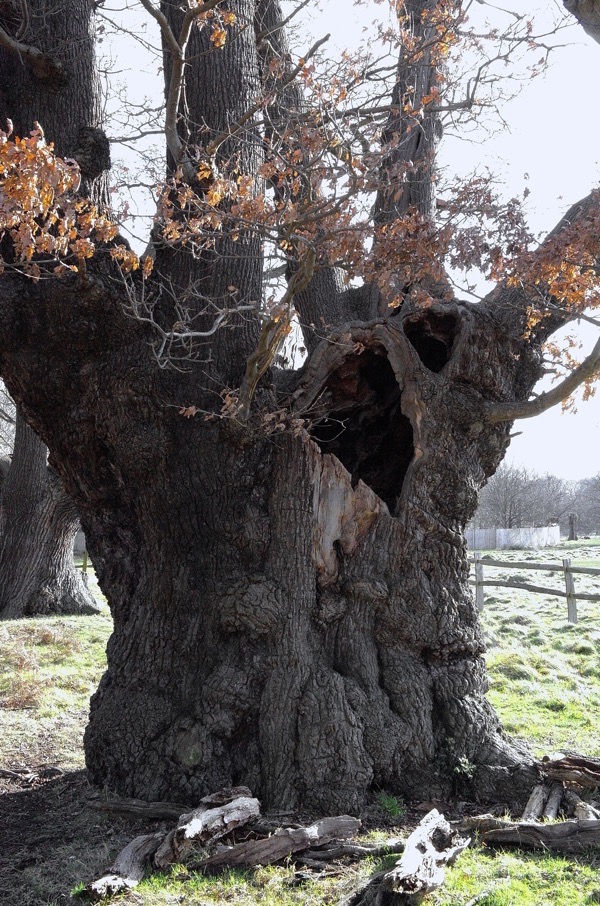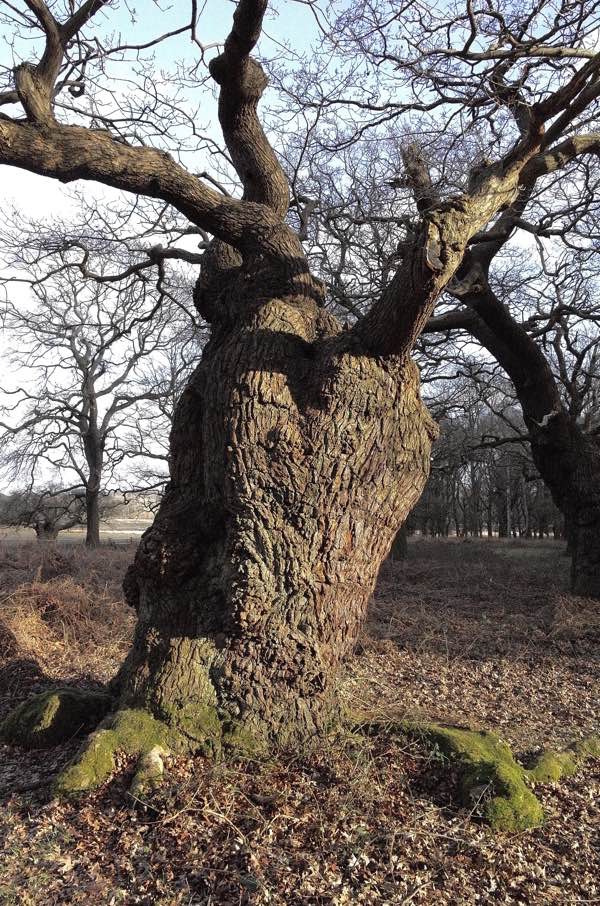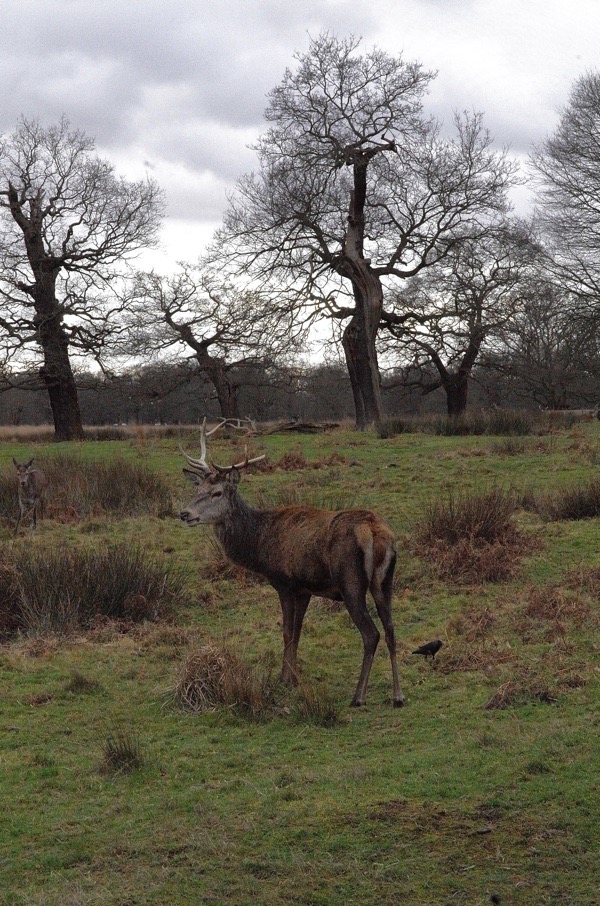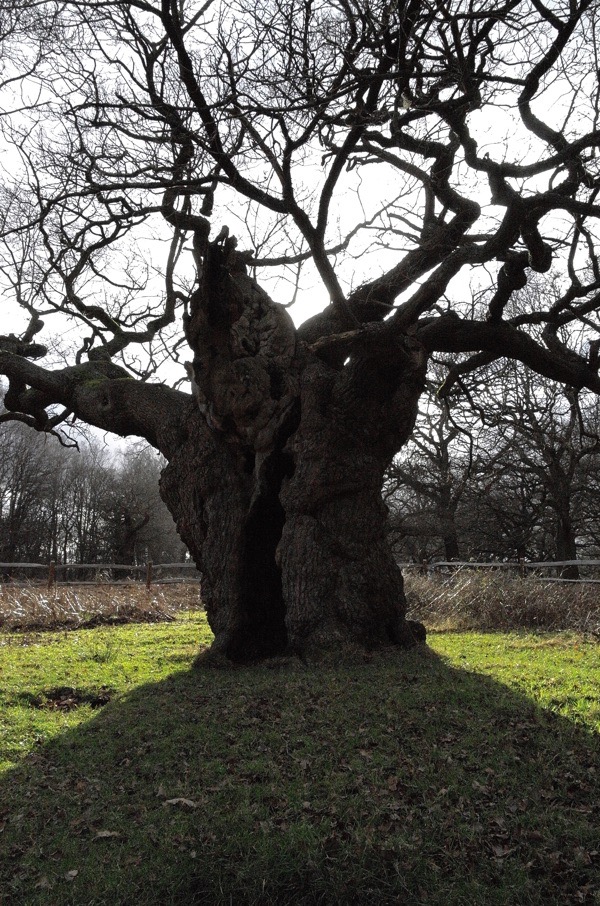The Royal Oak
The presence of great trees in the city has always been a source of fascination to me as one born in the countryside. I often think of the nineteenth century rural writer Richard Jefferies who, while struggling to make a career in London, took lonely walks in the parks for consolation and once, to ameliorate his home-sickness for the West Country, spontaneously wrapped his arms around a tree. Thus he originated the notion of ‘tree-hugging’, a phrase that is now used to embrace the deep affection which many people feel for trees. It is a tendency I recognise in myself, as I came to realise last week, while prowling around Richmond Park in the frost in search of ancient trees.
Yet I did not have to look very far, since this Royal Park has more than nine hundred oaks which are over five hundred years old – thus qualifying as ‘ancient’ – many of which are over seven hundred years in age. In fact, it is claimed that Richmond Park has more ancient trees than in the whole of France and Germany.
As I came upon more and more of them, the wonder of these tottering specimens filled me with such an accumulating sense of awe and delight that I could not understand how I could be entirely alone in the great empty park, enjoying them all to myself. It seemed incredible to me that the place was not teeming with visitors paying adoring homage to these gnarly old time-travellers, although I was equally grateful for their absence because my pleasure in communing with these ancient oaks was greater for being an intimate, solitary experience.
The ultimate object of my quest was the celebrated Royal Oak at the heart of the park. Since it is not marked on any map, I had no choice but to stop the few people I did meet and ask directions. Yet all of those of whom I enquired simply replied with a shrug and a polite grin, and consequently I could not avoid a certain absurdity in asking my question of unwary visitors while in a park surrounded by ancient trees. Eventually I had no choice but to retreat to a lodge where, after several phone calls among the park wardens, I was offered directions.
Returning to the woodland, I wondered how I might distinguish the wood for trees or rather – in this case – the Royal Oak from its fellows. The low-angled winter sunshine emerged at intervals from the passing clouds, casting a transient golden light upon the forest. As I reached the edge of the tree line and the landscape opened up, declining towards Pen Ponds, the clouds separated permitting a shaft of afternoon sunlight to illuminate a tree standing apart from the rest. A massive trunk, twisted and split, testified to seven centuries of growth, while the whirling crown of branches spreading in all directions was a product of more recent time, when the tree was no longer pollarded for the supply of oak staffs. I stood and contemplated its implacable presence in silent awe, confronting the aged monarch among an army of elderly cohorts in a forest of ancient trees. This was the Royal Oak.
The Royal Oak is over seven hundred years old.
※
This post first appeared on Spitalfields Life.
We are grateful to the Gentle Author for allowing us share it here.



